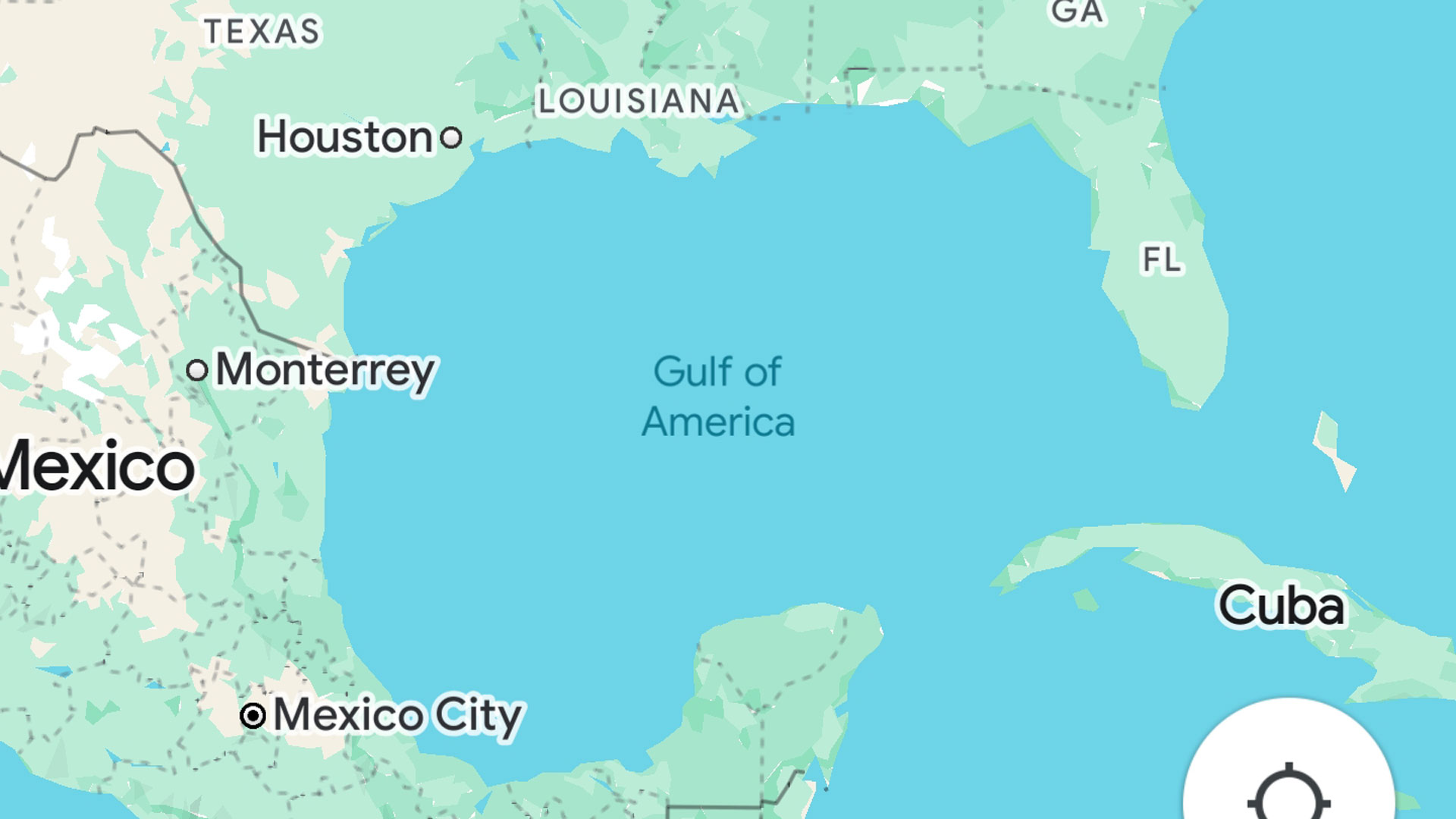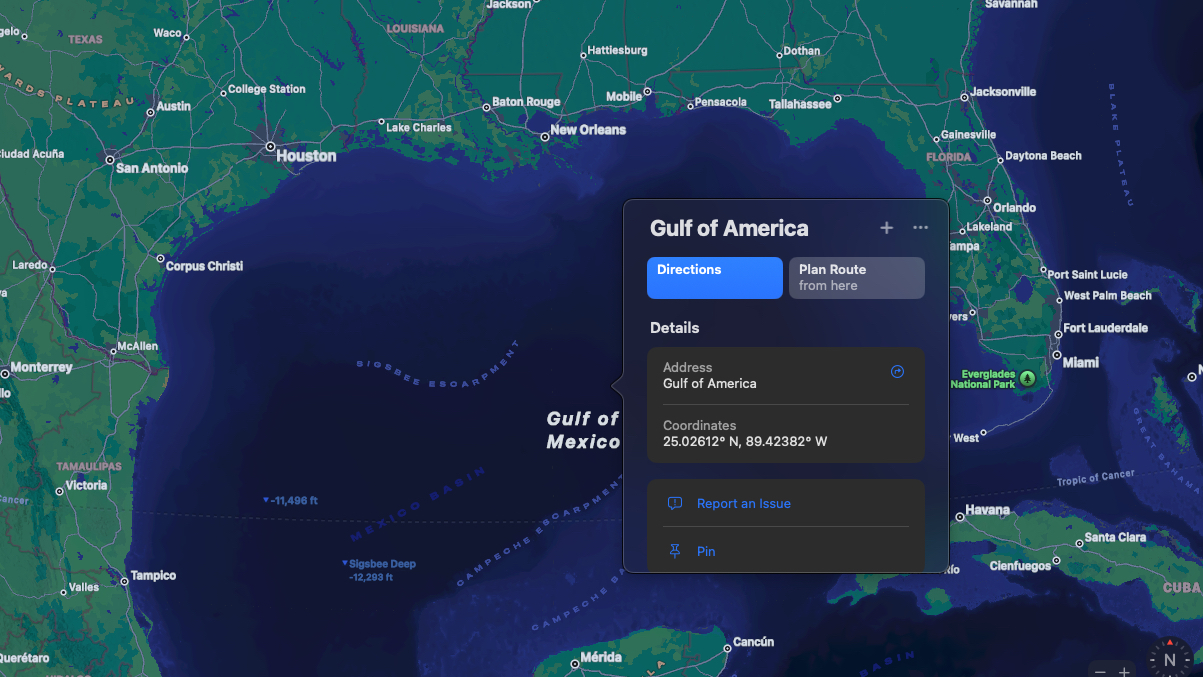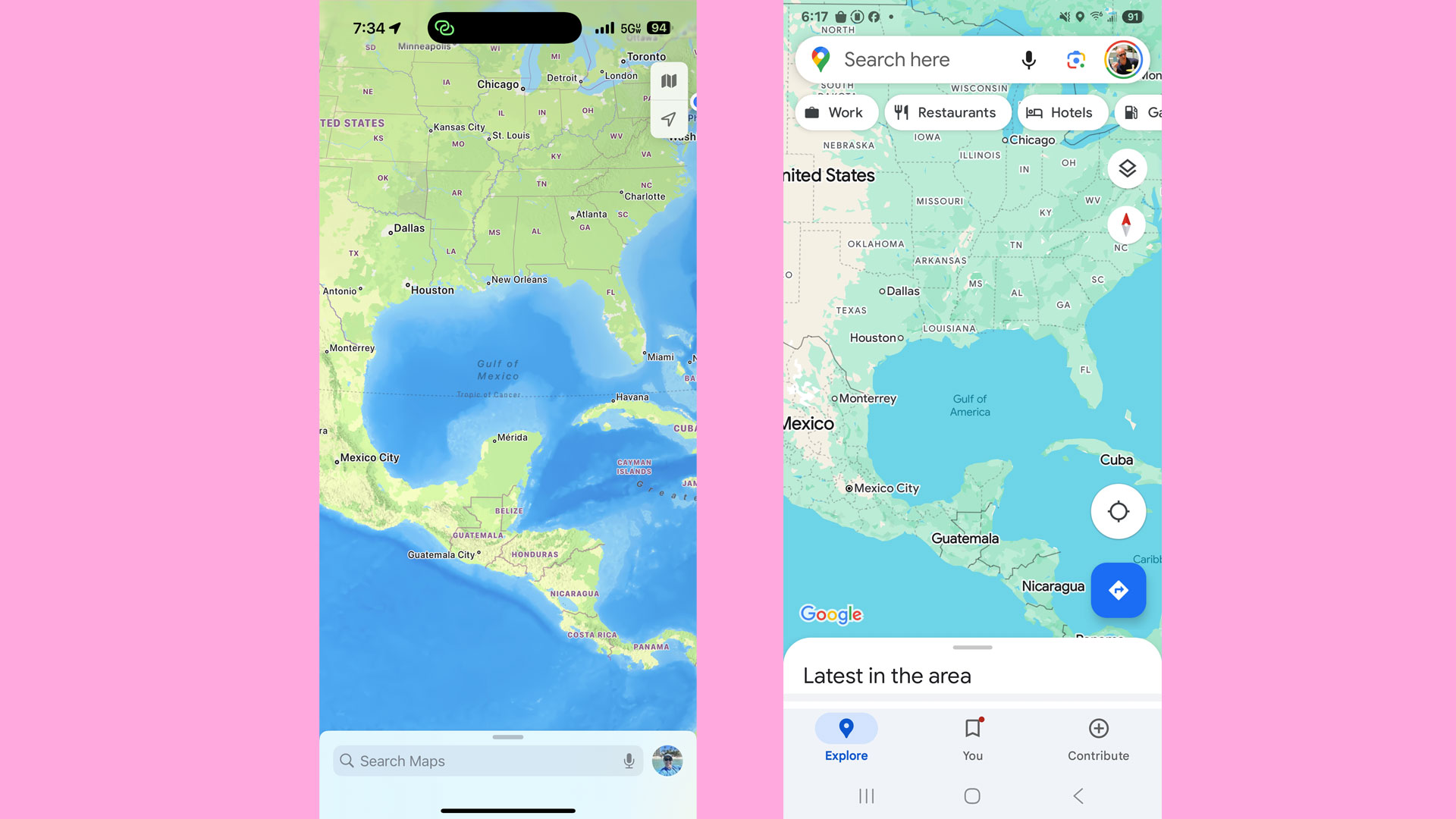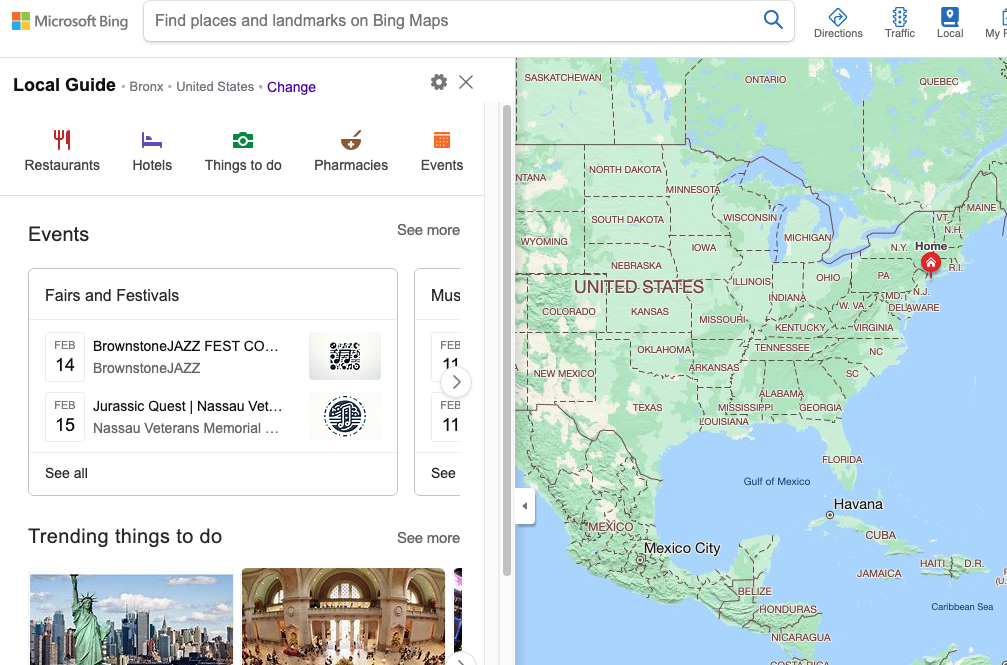Google Maps and Apple Maps rename Gulf of Mexico to Gulf of America, and I am so confused
There's a gulf of disagreement

I like to imagine someone swimming in the Gulf of Mexico when Google unceremoniously renamed it to the Gulf of America. There they are, backstroking across the pristine green and blue waters as the giant words float down from the sky and land on top of them. They're distressed and confused, quickly kick out from under the huge letters, pull out their iPhone, and open Bing Maps to switch it back to the Gulf of Mexico.
That's right, there's now technical disagreement on the name of a major body of water across map systems: Google Maps, Apple Maps, and Bing Maps.
Here's how it started:
Donald Trump takes the oath of Office as US President on January 21, 2025, and immediately announces his intention to rename the Gulf of Mexico to the Gulf of America, along with renaming Mount Denali back to Mount McKinley, and other geographic ambitions like annexing Canda, taking over Greenland, and reclaiming the Panama Canal.
While some of these ideas seemed far-fetched or ridiculous, Google soon announced it would be changing the name of the Gulf of Mexico in Google Maps. As of February 10, 2025, the change is live on all versions of Google Maps that, at least, Americans can see.
The hard truths of cartography have gone wobbly so anything is on the table.
While Apple's Maps initially showed no signs of changing its Maps labels and there were no public comments from Apple on its Gulf stance, there are already signs that it's getting in line. I've since confirmed with Apple that the change is on the way. An Apple spokesperson sent me this statement, "We’re implementing these changes globally, starting in the U.S. today [February 11, 2025]."
If you open Apple Maps right now in iOS 18, you may still see "Gulf of Mexico," but if you click on the label, the pop-up card lists the body of water as the "Gulf of America."
When I asked Google for comment, it pointed me to its original blog post announcing the change. What I wanted to know, though, was how Google made the decision and what technical hurdles exist when you're trying to region-set map labels for the world.
Someone is opening Google Maps somewhere in Mexico and still seeing "Gulf of Mexico." If they slide into the water and swim toward their American friend paddling near Texas, at what point does their Google Maps view change? Perhaps they'd consider switching to Apple Maps for a singular view of this 617,800 square mile, watery expanse.

Enter confusion
Google's choice is not without consequences. By so quickly acquiescing, does that mean that our US Google Maps experience becomes a moveable feast? Should we expect Mount Denali to switch over to McKinley (it's still Denali on Google Maps)? Will Google preemptively put an asterisk next to Canada or Granada? (*Label under interest of current US administration).
From a technical standpoint, I do wonder if those traveling from, say, the UK to the US for a holiday in the Gulf would find their Google Maps switching when they arrive in the States.
Since maps are now so changeable, perhaps Google (and Apple, too) can introduce some customization tools so we can all set our labeling preferences. I'd like to continue calling that water zone "The Gulf of Mexico." Can I set that somewhere? Right now, no, but the hard truths of cartography have gone wobbly, so anything is on the table.
Apple shifting, gradually

Apple's decision to go along with the White House's executive order is, perhaps, not that surprising considering that Apple CEO Tim Cook (along with other tech leaders like Google CEO Sundar Pichai and Meta CEO and Founder Mark Zuckerberg) was at Trump's inauguration. Apple was, it seems, planning to make the change, but, as with so many things, Apple wanted to do it on its own timeline.
What about the children?

For the first time, your choice of map apps might be less about features, utility, and turn-by-turn navigation and instead about which world view they share. If you were a fan of the Gulf of Mexico, you might now choose to go with the holdout Microsoft's Bing Maps, which, as of this writing, still has the location listed as the Gulf of Mexico but could soon change it, as well. If you like splashing America's name as far and wide as possible, you might stick with Apple and Google Maps.
As for those new to mapping, like school-age kids, this split might present a problem, especially if two major maps cannot agree on the name of one of the largest bodies of water in the world. I wonder how teachers will try and likely fail to explain away the confusion.
The great thing about digital maps is that they dispelled the confusion of old maps that could only show so much detail and eventually fell apart in your hands; your phone and its maps app are a world of accurate navigational information in your pocket. But now that trust is a bit fractured. One map might give you accurate directions to the Gulf of Mexico, and the other could confuse you by switching it to the Gulf of America and simply assume you're up to speed.
What a mess.
You might also like
Get daily insight, inspiration and deals in your inbox
Sign up for breaking news, reviews, opinion, top tech deals, and more.

A 38-year industry veteran and award-winning journalist, Lance has covered technology since PCs were the size of suitcases and “on line” meant “waiting.” He’s a former Lifewire Editor-in-Chief, Mashable Editor-in-Chief, and, before that, Editor in Chief of PCMag.com and Senior Vice President of Content for Ziff Davis, Inc. He also wrote a popular, weekly tech column for Medium called The Upgrade.
Lance Ulanoff makes frequent appearances on national, international, and local news programs including Live with Kelly and Mark, the Today Show, Good Morning America, CNBC, CNN, and the BBC.
You must confirm your public display name before commenting
Please logout and then login again, you will then be prompted to enter your display name.